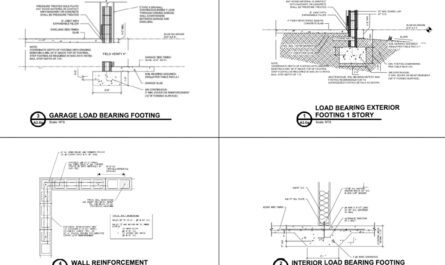Remember your first step into investing? Mine came in 2006, just before the market took us on one of the wildest rides in financial history. Tatiana started her investment journey a year later in 2007. Though we didn’t merge our finances until our marriage in 2014, I’ve tracked both our portfolios separately since those early days. Today, I’m excited to share our story of navigating bull markets, bear markets, and those fascinating periods in between. Pour yourself a fresh cup of coffee and get comfortable—we’ve got quite a tale to tell!
To put this journey in perspective, before we dive into the details, here’s a visual timeline of our investment journey and the major market events that shaped it. Each event shows how our portfolio performed compared to the S&P 500 during these critical moments:
Market Journey Timeline: Two Decades of Investing
Market Peak
Housing bubble reaches its peak. Our journey begins as new investors.
Global Financial Crisis
Lehman Brothers collapse triggers global financial meltdown. Our baptism by fire as new investors.
Recovery Begins
Markets bottom out in March and begin historic bull run. Our best performing year.
European Debt Crisis
Greece bailout and U.S. credit rating downgrade shake markets.
China Market Crash
Chinese stock market crash and Yuan devaluation create global uncertainty.
COVID-19 Pandemic
Global pandemic triggers fastest bear market in history, followed by rapid recovery.
Inflation Crisis
Highest inflation in 40 years leads to aggressive Fed rate hikes.
AI Boom
Magnificent Seven stocks drive market gains amid AI revolution.
2024: Portfolio: +10.79% | S&P: +23.31%
With this overview in mind, now let’s explore each of these periods in detail, starting with our baptism into the market…
The Baptism by Fire (2006-2009)
I jumped into the market in 2006, after I started working at Vanguard, catching the tail end of a bull run with the S&P 500 up 13.62% by year end. I got a positive return by year-end in my half year of investing. Not bad for a beginner! 🙂 But then came 2008—oh boy. While the S&P plunged 38.49%, our combined portfolio dropped about 61.81%. It was armageddon all over the place. I can sincerely say that I never lived through a time like this. Stocks were dirt cheap, and I wish I knew better. I could’ve picked up value stocks at rock bottom prices, but hindsight is always 20/20.
Looking back, our underperformance probably showed our inexperience. We were too new to panic sell and didn’t have much invested in the market, so we just kept contributing through the chaos. Sometimes being naive works in your favor!
The Recovery and Growth Phase (2009-2014)
More importantly, this period taught us the power of staying invested. The market bounced back hard in 2009 with a 23.45% gain, and we actually outperformed with a 46.28% return. Through the European debt crisis and the U.S. debt ceiling drama of 2011 (when the S&P stayed flat at 0%), we managed a small gain of 1.23%. During this time we discovered FIRE and started concentrating on investing as much as we could while I was getting rid of debt.
By 2013, when the market soared 29.60%, we achieved a more modest 19.32%. As our living expenses started to decrease and I got rid of our debt, we continued to increase our contributions.
Portfolio Performance: Our Journey vs. S&P 500 (2006-2024)
The Resilience Tests (2015-2019)
2015 was interesting—the market dipped 0.73%, and we matched that performance pretty closely with a -0.21% return. But 2018’s correction really tested our resolve. While the S&P dropped 6.24%, our portfolio fell 4.86%. This outperformance came from maintaining a balanced approach and not chasing the hottest stocks.
The Pandemic Era (2020-2022)
2020 was our moment of truth. When the plandemic hit, the market went crazy, but we stuck to our strategy. The S&P finished up 16.26%, and we matched it almost exactly at 16.05%. But 2021 was humbling—the market soared 29.89% while we only captured about 10.28%. Sometimes you win by not losing big—in 2022’s bear market, we only dropped 8.18% compared to the S&P’s 19.44% decline.
Recent Chapter (2023-2024)
Moving into more recent times, 2023 was strong across the board—we captured 22.96% while the market returned 24.23%. But could 2024 be a wake-up call? The S&P 500’s 23.31% gain, driven largely by the AI boom and Magnificent Seven stocks, left our more diversified approach in the dust at 10.79%. Yet we’re not changing course—we’ve learned that chasing performance usually ends badly.
The Numbers Tell a Story
Taking a step back, as we reflect on our investment journey spanning nearly two decades, the raw numbers tell an interesting story. While we’ve had both remarkable victories and significant challenges, our conservative approach—shaped by major life events like early retirement and real estate investments—has resulted in a different performance profile than the broader market. The “By the Numbers” snapshot below captures the key metrics of our journey, revealing both the dramatic swings during the 2008-2009 period and our overall conservative positioning relative to the S&P 500. These figures don’t include our real estate investments outside our self-directed IRA, which have been a significant contributor to our overall wealth-building strategy.
Investment Journey: By the Numbers
Best Performance Year
S&P 500: +23.45%
Worst Performance Year
S&P 500: -38.49%
S&P Comparison
Average Annual Return
S&P 500: ~10.04%
Negative Returns
Looking Forward (2024 and Beyond)
For many years, we’ve maintained significant cash positions in money market accounts for major real estate moves—our 2020 home purchase and our current home build started in 2024. Combined with our early retirement in 2019, this has led to a more conservative portfolio approach. While our real estate investments have performed well, they’re only reflected here through our self-directed IRA holdings.
Meanwhile, as our new home construction progresses, we’ll gradually reduce our cash reserves while maintaining our proven strategy of diversified ETF funds that have weathered various market cycles effectively.
Real Estate Focus: Finding Our Perfect Balance
Our journey toward real estate investment wasn’t a sudden decision but rather a gradual evolution shaped by our experiences in the market and my becoming a landlord back in 2004. This early exposure to property management taught us valuable lessons about the potential of real estate as a wealth-building tool. The monthly rental income from our property offered something our stock portfolio couldn’t: predictable cash flow that wasn’t at the mercy of market sentiment. While our stocks were riding the volatility roller coaster, our rental properties kept generating steady income, month after month. This stability was eye-opening.
Balancing Growth and Stability
Over the years, we’ve developed a clear vision for our net worth allocation: maintaining about 35% in stocks while focusing more heavily on real estate investments. This target emerged from years of experience and careful consideration. We discovered that this level of stock exposure gives us the best of both worlds—enough participation in bull markets to grow our wealth, but not so much that bear markets keep us up at night. The 2022 market downturn really validated this approach. While the S&P 500 dropped 19.44%, our diversified approach helped us weather the storm much better.
What we love most about our real estate investments is the control they give us. Unlike stocks, where we’re passive investors hoping for good management decisions, we can actively improve our properties, choose great tenants, and make strategic upgrades that increase both property value and rental income. Plus, as inflation rises, we can adjust rents accordingly—something you can’t do with stock dividends.
Building Our Real Estate Empire
Beyond the portfolio balance, the tax benefits have been another pleasant surprise. Between depreciation write-offs on properties and the tax efficiency of our remaining stock ETFs, we’ve found a sweet spot that keeps more money in our pockets. Real estate’s tax advantages are particularly powerful—they’ve helped us maintain strong cash flow while building equity simultaneously.
We’re approaching our target of 35% in stocks now, thanks to our real estate investments, which include our current home purchased in 2020, newly acquired land, and our home under construction.

While this already represents significant real estate exposure, we’re not done yet. Our plan is to convert our current home into a rental property once we move into our new house, and we have another investment opportunity on the horizon.
Ultimately, looking back, this shift from being heavily stock-focused to having a diversified portfolio of both stocks and real estate has transformed not just our investment strategy but our peace of mind. The combination of property appreciation, future rental income, and our carefully balanced stock portfolio positions us well for long-term financial success. It’s a balance that finally feels right for us.
What’s in Our Investment Portfolio Today?
Mostly Vanguard ETFs, some physical real estate, and a very tiny bit of individual stocks and crypto (less than 3% of portfolio).
What We’ve Learned
- After all these years, market timing is a fool’s game
- Underperforming in bull markets isn’t always bad if you’re protecting against the downside
- Your investment strategy should let you sleep at night, not match every market move
After 18 years, we’ve learned that investing success is about staying consistent with a strategy that matches your goals and risk tolerance. Sometimes you’ll lead, sometimes you’ll lag, but it’s the long-term journey that matters.
Now we’d love to hear from you. What’s your story? When did you start your investing journey? What lessons have the markets taught you? Share your experiences in the comments below; we’d love to hear your perspective!
P.S. Remember, while we’re sharing our real experiences, every investor’s journey is unique. What worked for us might not work for you, and that’s perfectly okay!





